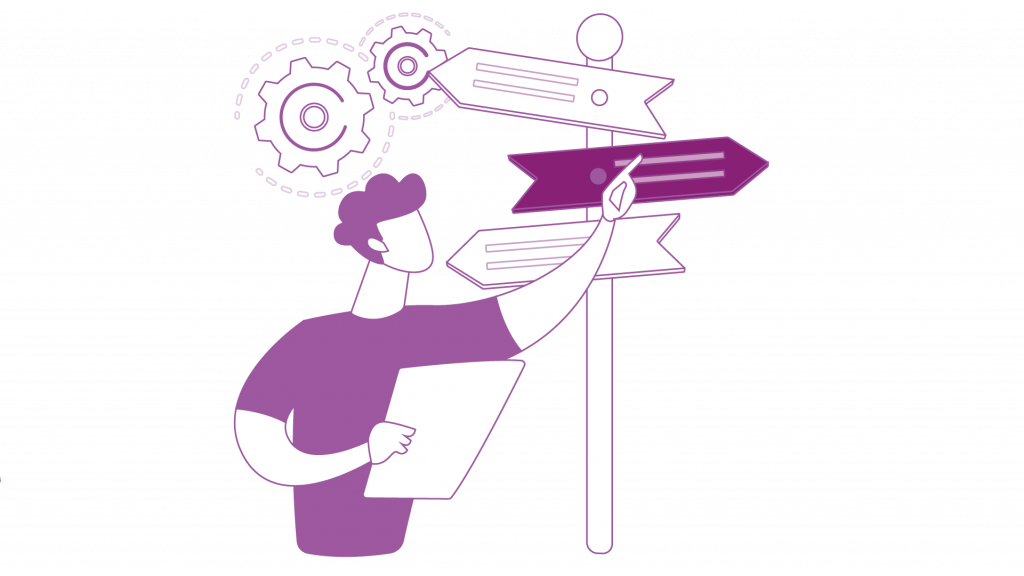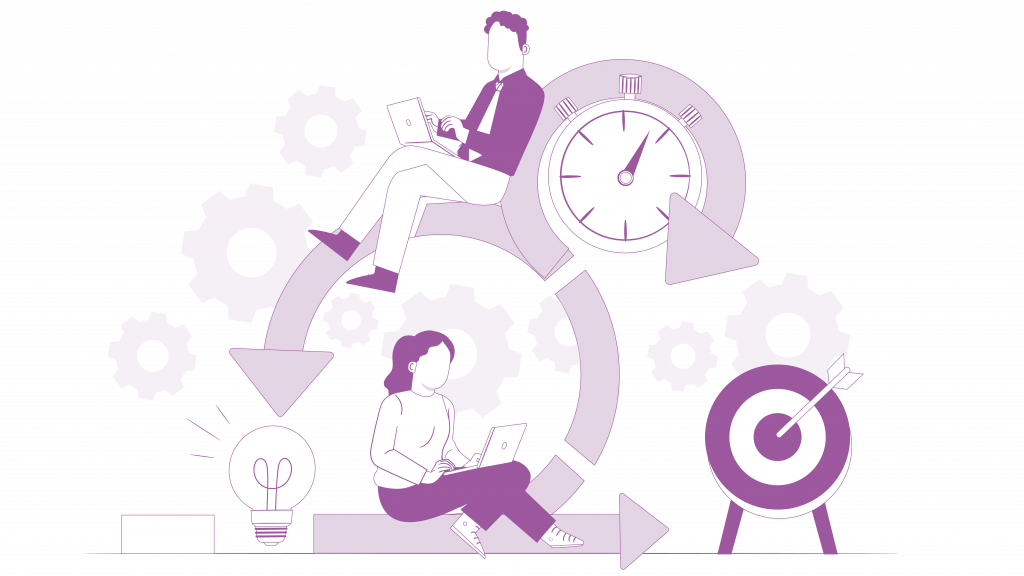Efficient business planning: Why automation is the answer
Do you question your business decisions at regular intervals? Or can you not yet really grasp the hype for modern approaches to work process optimization? A possible answer that brings uplift in your business management could be waiting for you behind the keyword automation.
In this blog post, we want to clearly explain the approach to automation and highlight the many benefits and potentials for your business. Because if you don’t make the switch to future-oriented business processes now, you will soon be left behind by your competitors and consequently will no longer be able to prove yourself on the market. To make sure that doesn’t happen, we’re here to help.

What does automation actually mean?
The automation of work processes is the decisive cornerstone of Industry 4.0 and the transformation brought about by digitization. It describes the introduction of processes into various work areas, characterized by autonomous workflows. In the process, the human component comes into play as little as possible, as control, regulation and, in some cases, monitoring are carried out autonomously. Such technologies can be hardware such as machines or software such as new programs and apps. The latest developments in the AI field open up the possibility of making automation even more efficient through self-learning algorithms. Humans then take the supervisory role only in critical aspects, while regulation and organization are fully automated. A fully automated environment accelerates the deployment of its resources from weeks to less than a day in the best case.
In the case of business process automation, core, management and other supporting processes are executed automatically as an example and are subject to continuous improvement. In the case of automation in the context of IT, software and systems are developed. With the proliferation of virtualized networks and cloud services, an automation strategy is essential in this context.

Why change at all?
Automating business processes also means optimizing the company’s overall performance. That, in turn, couldn’t be more critical in today’s fast-paced world that thrives on growth and profit. For many, changes to work processes are still mentally associated with extra work and stress. Why make changes when it just works somehow?
In order to still be able to play in the market tomorrow, you will not be able to avoid switching to modern work processes. Because outdated work patterns may still be relevant in practice today, but they are certainly no longer practicable. Yesterday’s sales figures are already obsolete today. So you never quite know what your current position is. Planning ahead and making decisions that will only take effect in months is simply impossible. Keeping planning cycles frequent becomes a Sisyphean task. Make friends with the idea of leaving the supposedly safe edge of your plate for the best possible outcome for your company. And not just once, but again and again. Sounds like a lot of work?
That doesn’t have to be the reality. If you take the first step towards automation, you will be able to view the current situation of your company on a daily basis. So not only do you know what terrain you are entering with a business decision, what risk you might be taking and what opportunities you can seize today, but you can also be sure that an equally transparent view will be available to you tomorrow.

The many reasons why it pays off
Particularly in SMEs, large parts of work processes are still carried out in the classic manual way and automation is often viewed critically. Especially for SMEs, however, the switch is very worthwhile, as the benefits are tangible even without high costs and plenty of experienced IT staff. What at first sounds like just saving on manpower, however, has other plus points to offer.
Your overall productivity increases
One key benefit is obvious: the company’s overall productivity increases when use is made of automating processes. Systems that work around the clock don’t get tired, don’t need breaks or vacations. Thus, no lack of personnel stands in the way of the current sales figures. Furthermore, a much lower error rate can be assumed if the work steps are no longer carried out manually. The interfaces at which misunderstandings can occur are reduced to a minimum through automation.
High employee satisfaction leads to higher competitiveness
Your employees, in turn, can turn to more complex tasks, which optimizes your company’s value creation. Meanwhile, employee satisfaction increases because time no longer has to be wasted on tedious routine tasks and repetitive maintenance work. Employees feel seen and valued when your growth is fueled by new, exciting tasks. Increased productivity through automation and happier employees leads to increased profitability. This, in turn, leads to increased competitiveness. Along the way, ROI (return on investment) is regulated and improved. Production goals are achieved faster and with significantly fewer resources.

Flexibility at the highest level
Those who rely on automation not only become more productive, but also more flexible. Agility is a trait that couldn’t be more important in these tumultuous times of pandemics, skills shortages and inflation. When surprise bottlenecks occur in your production or your employee situation changes, you can stay your course while others haven’t even set it yet.
Gain while you save
As an aside, automation saves one of the most important commodities of efficiently positioned companies: Time. The daily workload can be divided more strategically, allowing you to prioritize other work processes that actually require employee expertise. In addition, they are more detached with regard to deadlines, as these are met automatically.

More transparency for your daily operations
What also saves time is transparency. Clarity in the key figures determines the day-to-day operations. The more transparently the values are processed, the more efficiently your company can act and derive action steps. Thanks to automation, presenting transparent figures on a daily basis and on demand is no longer wishful thinking. Without further assistance, your corporate planning automatically feeds itself with the latest results from the input of your employees and transparently generates new recommendations for action. These can then be directly processed in an automated manner.
For a successful step-by-step automation strategy, you should ask yourself the following questions:
- First carry out an ACTUAL analysis: Which workflows currently exist? How efficient are they?
- Where is the greatest potential in your company?
- What is the TARGET state in the company? Where and how should you improve activities to increase efficiency?
- Create a SWOT matrix: What are the strengths, weaknesses, opportunities and threats in your project?
- Write a concept and develop a strategy. Set measurable goals.
- Once all aspects have been clarified, it’s time to implement the process automation in a planned and monitored manner.
Of course, the challenges for your company do not suddenly disappear just because you decide to automate your work processes. After all, automated processes only deliver the quality that you are prepared for. It is and remains important to prepare and maintain new work patterns. Through a constant comparison between target and actual, the achieved successes can be evaluated. If necessary, readjustments are made. If implementation is not carefully planned, you risk losing the loyalty of your employees and bringing additional chaos into your organization.

How to get the most out of implementation
It’s also beneficial to move to centralized data systems, such as common scheduling software, in parallel. This allows you to get far more out of the status quo through automation. Central systems provide an optimal basis for higher levels of automation. Communication processes are much easier when all departments have access to the same basis of data. If this breeding ground is provided, you will benefit from even better results in your automation process.
The introduction of new planning software is based on your needs and goals. In this way, your existing planning is accelerated and automated. With the help of cloud-based controlling software, you capture your data in a transparent and consistent form that enables fast, agile and effective control on sight. To ensure that your team enjoys working with the software and that all requirements are met, onboarding takes place in the form of joint briefings with us. In a joint workshop, a first prototype is created, which you can present to the steakholders. Afterwards, a customized planning model is developed within a few days so that you can get started with tomorrow’s planning. Read more about the onboarding process now.
You can test the QVANTUM Cloud for free without an appointment now. You can find more information about the QVANTUM software in our overview.


